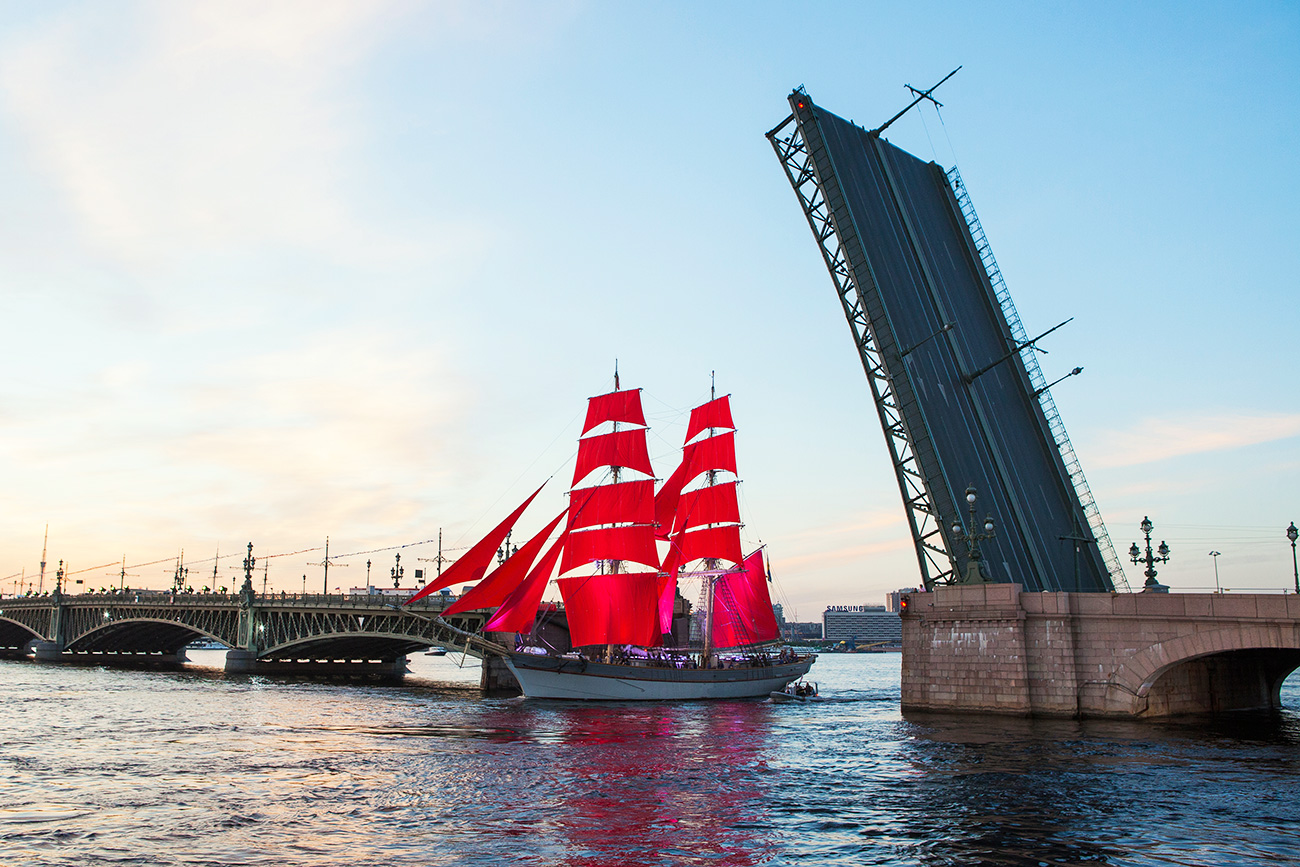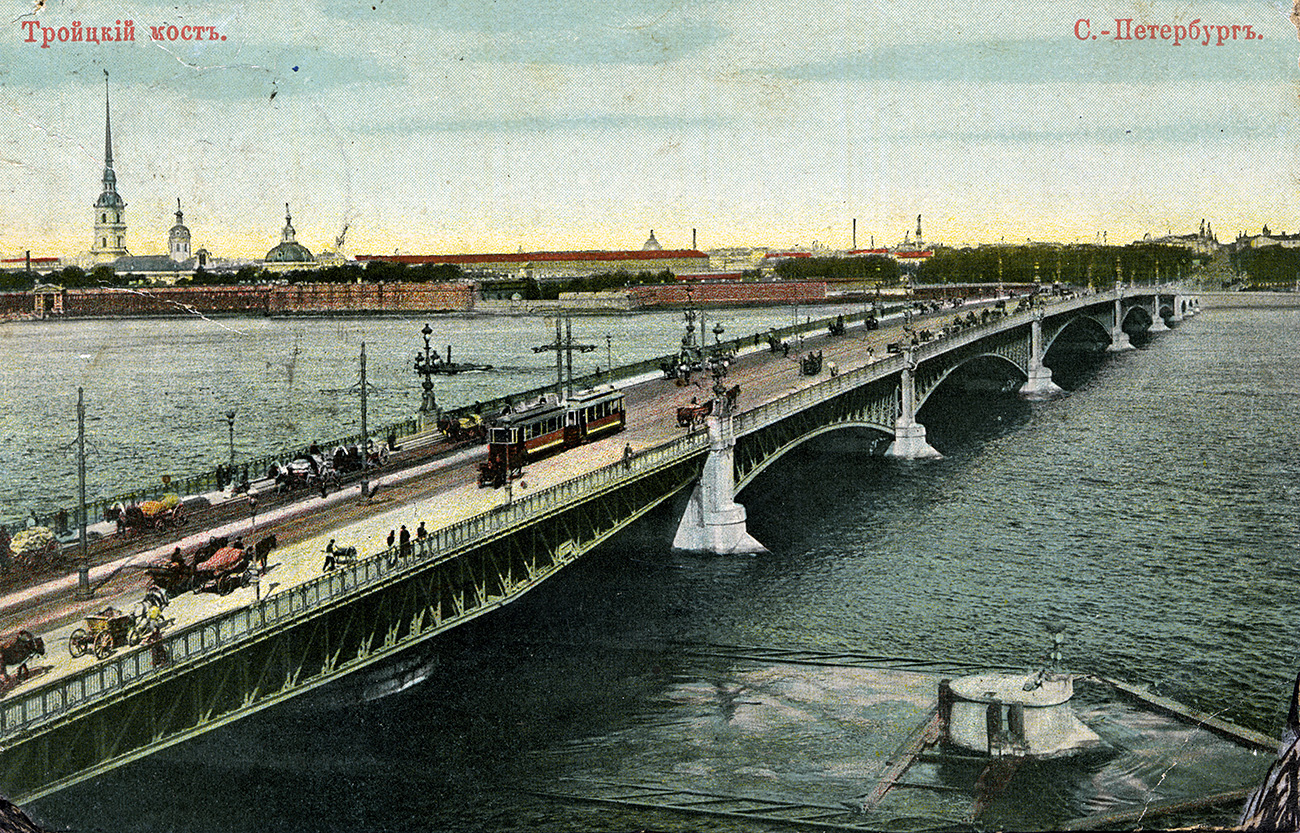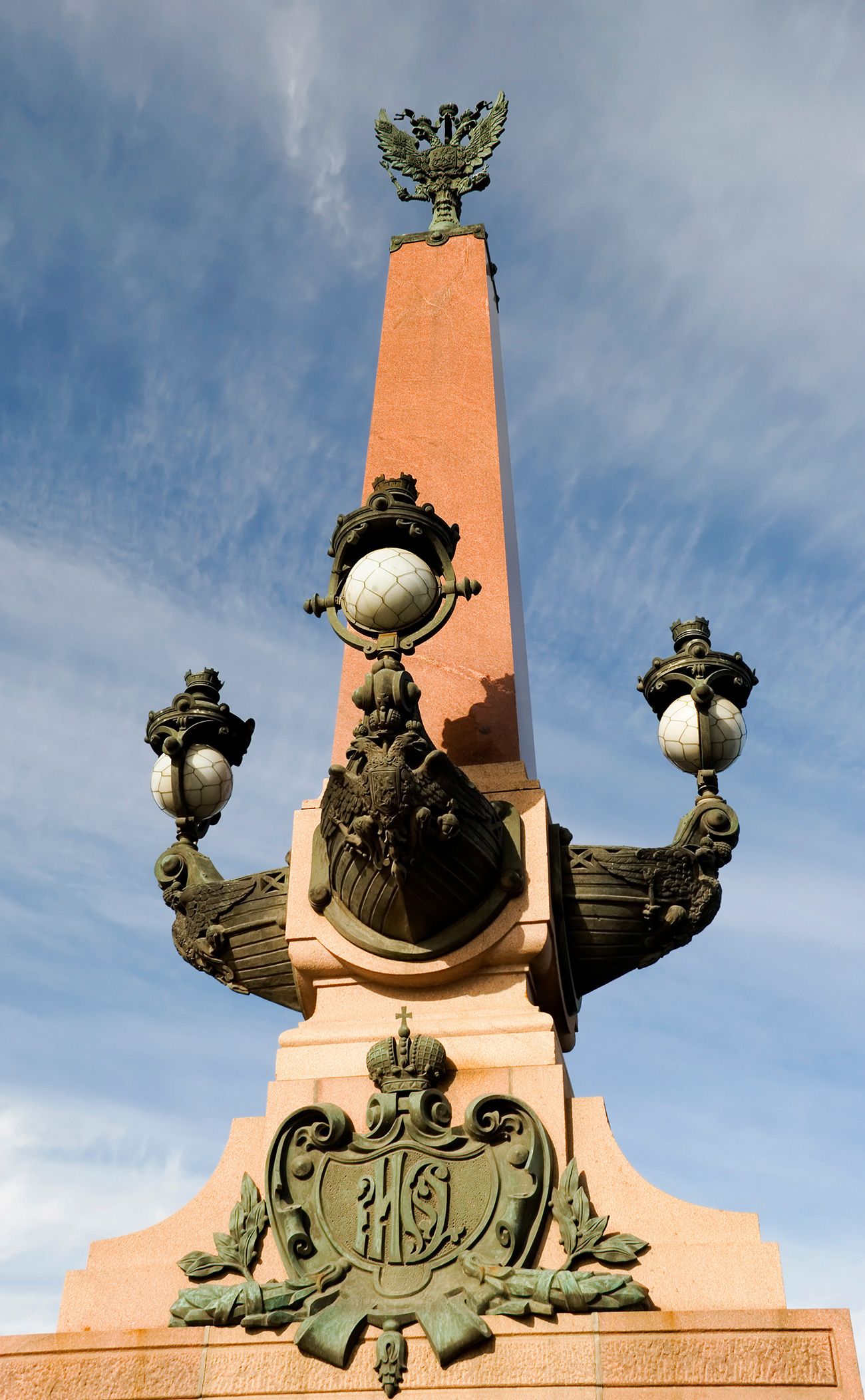5 reasons why you must see St. Petersburg’s most extraordinary bridge

Trinity bridge during the Scarlet Sails festival
Legion Media1. More than 200 years of history
 Trinity Bridge with a horse-drawn rail car pictured on an old post card / Legion Media
Trinity Bridge with a horse-drawn rail car pictured on an old post card / Legion Media
Trinity Bridge connects Suvorov Square and Palace Embankment on one side of the Neva River, with Trinity Square on the other side, not far from the Peter and Paul Fortress.
The city’s very first bridge was built close to this spot in 1803, which was originally a temporary pontoon bridge with a horse-drawn rail car that led to the Summer Gardens. About two decades later, the first permanent bridge was built, but this time it led to the Suvorov Square, which is about 100 meters west of the Summer Gardens. Finally, in 1903 Trinity Bridge was opened to the public.
2. Changing names
 Trinity bridge during the Scarlet Sails festival / Legion Media
Trinity bridge during the Scarlet Sails festival / Legion Media
The 1803 bridge was called the Voskresensky Bridge, and after reconstruction in 1827 it was renamed the Suvorovsky Bridge in honor of the great Russian general. In 1903, the bridge was named Trinity to honor the nearby Trinity Cathedral on Trinity Square.
After the 1917 Revolution, the Soviets renamed it the Bridge of Equality, and in 1931, when the Trinity Cathedral was destroyed, it made sense to change the bridge's name. An opportunity came in 1934 following the murder of Sergei Kirov, head of the Leningrad Communist Party. Kirov Bridge held sway until the communist authorities were overthrown in 1991, and amidst a patriotic and religious upswing, the name of Trinity was returned.
3. Eiffel was here
 Rostral column of the Trinity bridge / Legion Media
Rostral column of the Trinity bridge / Legion Media
In the late 19th century, city authorities decided to build a grand and impressive bridge, and held a competition. Though first prize went to Gustave Eiffel's company, the engineers were selected from another French company, Batignolles. According to the agreement, they had to use only Russian materials and Russian workers. St. Petersburg architects also played an active role, and the Academy of Arts even created a commission to monitor construction. French designers, however, prepared ornamentation for the bridge - grids and lanterns in the Art Nouveau style. The bridge was also decorated with two rostral columns.
4. Nicholas II presses the button
 St. Petersburg head P. Lelyanov gives the Emperor Nicholas II a button to raise the drawbridge on the bridge opening day, May 16, 1903 / Archive Photo
St. Petersburg head P. Lelyanov gives the Emperor Nicholas II a button to raise the drawbridge on the bridge opening day, May 16, 1903 / Archive Photo
Construction of the Trinity Bridge began on Aug. 12, 1897 in the presence of Emperor Nicholas II and French President Félix Faure. Just a year earlier, Nicholas II opened the Alexander III Bridge in Paris, which was dedicated to his father. The completion of the Trinity Bridge was delayed due to technical problems and opened only in 1903, coinciding with the 200th anniversary of St. Petersburg. There is an archival photo showing the city head giving the Emperor a button that he then pressed to raise the drawbridge.
5. Massive Soviet-era reconstruction
 Panorama of St. Petersburg: Trinity Bridge and Peter-Pavel's Fortress / Legion Media
Panorama of St. Petersburg: Trinity Bridge and Peter-Pavel's Fortress / Legion Media
In 1965, the bridge was closed for reconstruction, and Soviet engineers spent two years modernizing and reconstructing the bridge in order to accommodate navigation of modern ships. A new lifting mechanism was installed, and the double span system was changed to a single one. The bridge re-opened in 1967.
By the way, until 1965, when the 905-meter-long Alexander Nevsky Bridge was built, Trinity was the city's longest bridge at 582 meters.
Bonus: Local legend says that the great Soviet aviator, Valery Chkalov, flew his plan right under the Trinity Bridge some time in the 1930s. No one knows exactly when, but this legend is quite persistent, especially because his widow insists it did happen.
Read more:
From Neva to the Amur: Russia’s Top 10 most impressive bridges
The project of the century: 10 facts about Europe’s longest bridge
Learn Russian geography while counting your cash
5 major landmarks on Nevsky Prospect that visitors often miss
What's life like in St. Petersburg? Famous locals share their experiences
If using any of Russia Beyond's content, partly or in full, always provide an active hyperlink to the original material.
Subscribe
to our newsletter!
Get the week's best stories straight to your inbox